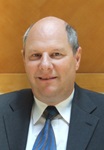We’re excited to share the results of the upcoming IEC 61850 IOP (Interoperability Testing Event), hosted by the UCA International User Group. For the past 10 years, Triangle MicroWorks has been a proud participant in this biannual event, rigorously testing our IEC 61850 Source Code Library, our testing and simulation tools, and our protocol gateway with real-world devices and vendors.
This year, the event will take place in Birmingham, AL, from September 12th to 15th. Historically, the focus has been on protocol-level interoperability. However, the emphasis has shifted to higher-level application and functional testing, more closely resembling a multi-vendor digital substation commissioning process. We’ll explore what this means for the industry and how it impacts our approach to ensuring interoperability.
Summary of IOP
Unlike previous events where single, large substation with fixed device positions was designed, this year’s strategy involves a series of smaller, modular designs.
Each participating device was assigned a series of roles based on its functionality, but with a key difference: any device can take on any role, provided it has the necessary capabilities. This flexible design enhances opportunities for cross-vendor interoperability testing and allows us to run multiple tests in parallel.
Our testing will start with commissioning scenarios, where devices are assessed in their normal operational mode. Following this, we'll shift focus to maintenance scenarios, where certain devices will be virtually isolated. This phase of testing will involve a more complex setup, as it will include both operational devices and those in maintenance, allowing us to evaluate the interactions and interoperability among a greater number of devices simultaneously.
Here’s what we’ll cover:
Preparation for the IOP:
- Basic Application Profiles (BAPs): We’ll review how a taskforce within the IOP working group developed a series of BAPs, which outline the signal flow and logic for common substation applications such as Breaker Failure and Reclosing. These profiles will be integrated into several small test scenarios, each covering one or two bays to effectively test these applications.
- Test Plans: Tests at the IOP fall into several categories, each requiring its own test plan
- Unit Testing ensures individual IEDs are capable of fulfilling their designated roles.
- Functional testing validates groups of IEDs working in conjunction to complete the functionality defined in the BAPs
- Security Testing covers the various aspects of security defined in IEC 61850 and 62351, including authentication and encryption of Routable GOOSE
- Time Synchronization tests put PTP Grandmaster Clocks and IED PTP Clients through a slew of scenarios to ensure protection is maintained during network and time sync events.
- ICD and SCD Files: Vendors have submitted ICD files describing the capabilities for their participating devices. These have been validated using the RiseClipse OCL engine, and are being assigned roles in the SSDs, ultimately generating a series of SCD files for the IOP.
Onsite IOP Testing:
- Simulation and Functional Tests: Learn about how DTM (Distributed Test Manager) was used to simulate an IED that participated in functional tests.
- DTM & TSP Utilization: We’ll discuss how was used DTM to validate the Substation Specification (SSD) early in the design process, as well as each drafts of SCDs as it was published. Test Sequences and visualizations were created and captured in
- Test Suite Pro: TSP (Test Suite Pro), performed a critical role in verifying test successes, and determining where any why any failures occurred. We’ll cover the use of Test Suite Pro for commissioning, including tools like the Test Sequencer, Logic Analyzer, and Signal Flow Diagram. We’ll also explore its role as a test client and impromptu HMI during functional tests.
- SCL Navigator: We’ll explain how SCL Navigator was used to validate ICD, SSD, and SCD files using the latest RiseClipse rules from WG10. This IOP marked a shift in focus to validating these new rules, alongside the files themselves.
Review of Results:
- Finally, we’ll summarize the outcomes of the testing and discuss key findings, our insights and lessons learned.
Join us as we delve into these topics and provide a comprehensive overview of the event’s successes and insights.
Instructors:

Christoph Brunner
President
it4Power
Christoph Brunner has graduated as electrical engineer at the Swiss Federal Institute of Technology in 1983. He is Utility Industry professional with over 40 years of industry experience with both knowledge across several areas within the Utility Industry and of technologies from the Automation Industry. He is a well-known expert on IEC 61850 as he has been involved in the development of the standard since the beginning. He is president of it4power in Switzerland, a consulting company to the power industry. As such, he has been consultant in many projects for substation automation and projects involving IEC 61850. He has worked as a project manager at ABB Switzerland Ltd in the business area Power Technology Products in Zurich / Switzerland where he was responsible for the process close communication architecture of the substation automation system. He is convenor of the working group (WG) 10 of the IEC TC57 and member of WG 17, 18 and 19 of IEC TC57. He is IEEE Fellow, member of IEEE-PES and IEEE-SA. He is active in several working groups of the IEEE-PSRC (Power Engineering Society – Relay Committee) and member of the PSRC main committee and the subcommittee H. He is guest professor at Shangdong University of technology and international advisor to the board of the UCA international users group.

Jackson Moore
Applications Engineer
Triangle MicroWorks, Inc.
Jackson received degrees in Electrical Engineering and Computer Engineering from North Carolina State University and has a background in power systems engineering. Prior to joining Triangle, Jackson worked as a Microgrid Systems Engineer, where he aided in the design and development of control systems for multi-source microgrids. In his role of Application Engineer, Jackson serves as a bridge between our customers and our development team, seeking to understand and solve the unique and complex challenges facing the energy automation sector.